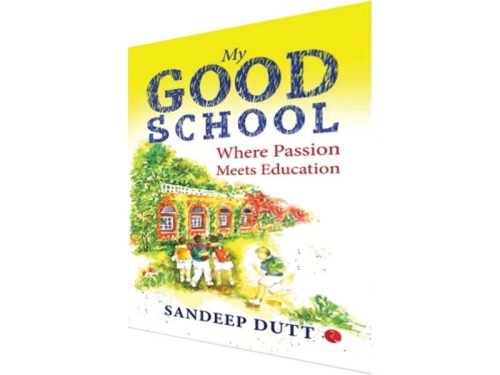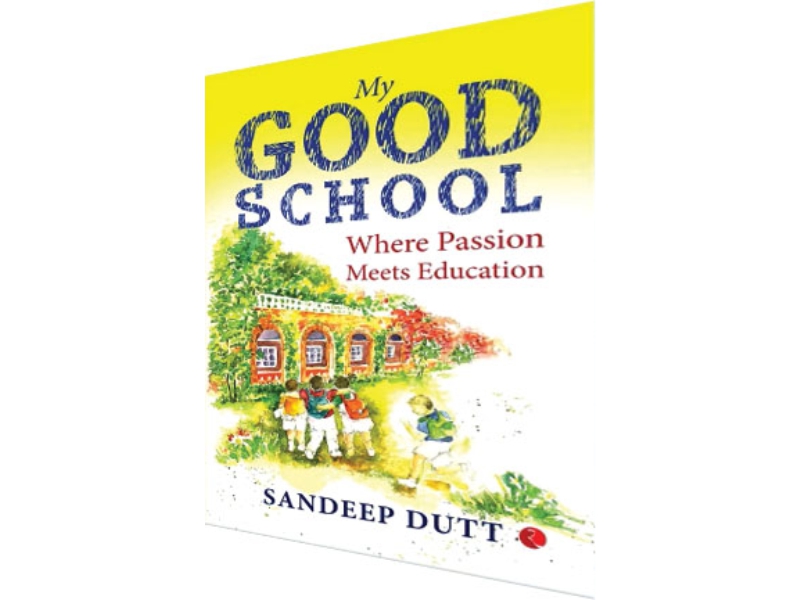Bland general prescription: My good school
Dilip Thakore
My good school: Where passion meets education; Sandeep Dutt
Rupa publications; Rs.295; Pages 169
The objective of this first edition of My Good School authored by Dehradun-based Sandeep Dutt, described as a school coach, bookseller, runner, mountaineer and social entrepreneur with the mission “to help schools deliver better”, is to advise parents to choose quality schools, promoters to build great schools and school leaders/principals to nurture admirable institutions. According to Dutt, a My Good School is an institution that enables “young people to follow their passions in Service, Skill, Sport and Study”. Quite rightly Dutt recognises that there’s more to K-12 education than mere academics and advocates holistic, all-round education, a pedagogy on which a global consensus has emerged.
In the introduction the author recounts that he often meets people who own a tract of land which prompts them to contemplate promotion of a school. “The challenge is not in owning or setting up a school, but operating it well and delivering quality education. We need to understand the purpose of the school before we set out to build it with brick and mortar,” writes Dutt.
The purpose of a school is to provide children the opportunity to do community service, learn a skill, play sports and study, as indicated above. Then follow several chapters on how children learn best (through a learning needs analysis) for teachers; choice of curriculum (the relative merits of CBSE, CISCE and state boards presumably for promoters/parents) with the author expressing his preference for CISCE; building schools with quality (ensure you have a teacher development programme, practice diversity, inclusion and belonging) for promoters/ principals; making sure that learning is enjoyable for children (“fun is an essential element of any learning process”) for principals/teachers; the importance of education and emotional support at home (“parents must find time and be intrinsically involved and grow up with the children”) for parents; the importance of classroom enthusiasm (“if the teacher is enjoying their (sic) work certainly the students will love the process of learning”) for teachers, and why teachers are averse to change (lack of appreciation, loss of self-esteem, out-dated syllabuses and tools of delivery).
All this and other advice on the importance of cultivating children’s reading habit; innovation and design; the importance of teaching handwriting; every school staging its annual day; value of liberal arts education and openness to new pedagogies and ‘learning approaches’ is useful. But the problem is that the prescriptions are old hat and have been reiterated time and again. Obviously without much effect because comprehension, reading and numeracy skills in the overwhelming majority of India’s 1.5 million schools — including 450,000 private schools — are poor. This is repeatedly underlined by the Annual Status of Education Report (ASER) of the highly respected Pratham Education Foundation.
Therefore clearly the problem is not the quality of school improvement prescriptions, but how to implement them. In this regard, this book is very reluctant to give any credit to schools that have successfully implemented these well-worn prescriptions. The only two which Dutt finds worthy of mention are the Fab India School in Bali, Rajasthan (“a shining example of the aristocracy of service”) and the Doon School, Dehradun. But this judgement is suspect because the former was conceptualised and constructed by Dutt and the latter is his alma mater.
Curiously, India’s globally respected schools such as Rishi Valley (estb. 1926), Lawrence Sanawar (1847), Woodstock (1852); Bishop Cotton, Shimla (1859) and Sherwood, Nainital (1869) among others, don’t merit mention. Nor does the author of this manual attempt to make a distinction between day, boarding and international schools which self-evidently require to be assessed according to differing metrics.
More curiously, Dutt is contemptuous of the comprehensive annual EducationWorld India School Rankings (EWISR, estb. 2007) which rates the country’s top 2,500-3,000 schools under 14 parameters of education excellence (teacher competence, teacher development and welfare, leadership, infrastructure, co-curricular and sports education etc) and ranks them in three main and 11 sub-categories (to eliminate apples and oranges type comparisons). The annual EWISR is based on the perception of 12,000-15,000 carefully chosen sample respondents (educationists, principals, parents, teachers and senior students).
Despite EWISR having established a global reputation as the world’s largest school rankings initiative which attempts to make an objective assessment of the relative strengths and weaknesses of the country’s day, legacy, boarding, international, government and private budget schools ranked inter se in separate categories — a monumental interviews-based field survey — Dutt dismisses all schools ranking surveys as “dubious listings”. “The annual listing, the much awaited media hype and sensationalism is all harming the education process, rather than helping it. Good work itself outshines the ‘good word’ sold to us by media hype,” he opines.
Even if one accepts this confusing argument, surely parents can’t be expected to visit 450,000 private schools — government schools are not on the author’s radar — to assess which ones are executing best practices prescribed by him. The vitally important service the annual EWISR provides is that it informs and enables parents and teachers (looking for best places to serve in) to study the relative strengths and weaknesses of schools and short-list, if not select, the most suitable school for their children.
Although a useful good schools manual, this book’s perspective is entirely subjective and opinionated, bereft of objective evidence and case studies.


















Add comment